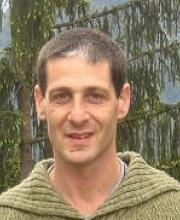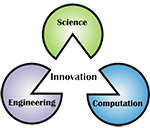Prof. Yossi Paltiel
The Peter Brojde Scholar 2010- 2012

Professor Yossi Paltiel is now in the Applied Physics Department chair in the Hebrew University of Jerusalem Israel. Prof. Paltiel has worked for both leading high-tech industry groups and in the academic world. Since July 2009, He is the leading the Quantum Nano Engineering group at the Hebrew University, Israel. Paltiel's group’s goal is to establish a way to incorporate quantum mechanics into room temperature "classical" computation and reading schemes. This will provide quantum coherence control at nanometer scale distances, while maintaining the physical characteristics of currently available computer input-output devices. Professor Paltiel has published more than 80 papers in leading journals as well as issued 11 patents.
In the last two years Professor Paltiel was the chair of the Applied Physics Department as well as in the board of the Nano Center and the HUJI Quantum Information Center. Since 2012 Paltiel has published more than 20 papers in leading journals (including Nano Letter, Nature Communications and ACS Photonics) and given more than 30 invited talks. These talks include an invited talk at the APS March meeting, invited talk to the google Foo camp, and a keynote talk at the annual symposium of the Pittsburgh Quantum Institute. Paltiel has also been for three weeks the George A Miller visiting Professor at the University of Illinois Urbana Champaign, USA and a visiting professor at the Center for Excitonics Study at MIT, Boston USA. Professor Paltiel and Professor Keren are also the organizers of the QUEBS 2017 Quantum Biology workshop in Jerusalem 2017.
Paltiel has a startup company named Valentis Nanotech founded in 2013. The company utilizes nanocellulose unique properties to produce a biodegradable transparent sheet with additional controlled optical and gas/water barrier properties. The sheets properties are controlled by introducing nano-crystals dispersed within the nanocellulose C layers. The mechanical properties of the NCC coated plastic sheets were shown to be significantly improved, without being compromised by the nanocrystals addition.

